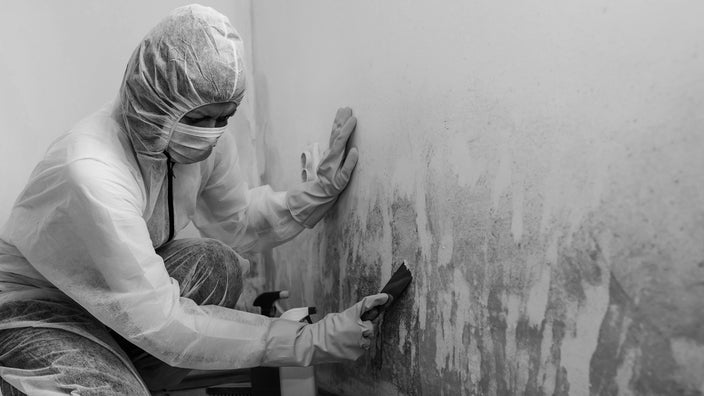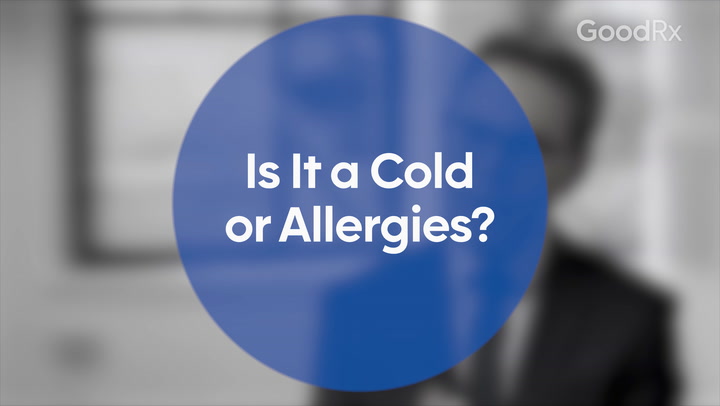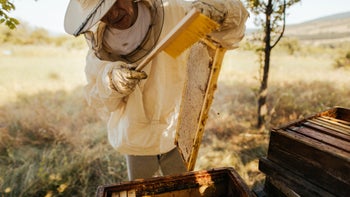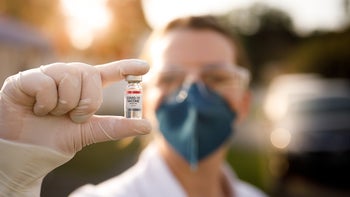
How Much Does Mold Remediation Cost?
Key takeaways:
Large mold infestations require professional removal, which can cost between $1,500 and $4,000. For patches smaller than 10 square feet, you may be able to contain and remove the mold yourself.
You should deal with mold as soon as you see or smell it. It can cause allergy-like symptoms even in healthy people and endanger people with chronic illnesses.
Professional mold removal can help make sure that no spores are forming colonies elsewhere in your home, such as your heating or air conditioning system.

Mold is everywhere. Normally, though, the amount we encounter is low enough that most people aren’t affected.
But even a patch of mold the size of a bath towel can sometimes cause respiratory problems. People without diagnosed health conditions can experience allergy-like symptoms — like sniffling, sneezing and runny nose — if they inhale a lot of mold spores. People with compromised or suppressed immune systems face a risk of fungal infection. And if your kid has asthma or your dad has COPD, for example, mold in the home could make it harder for them to breathe.
You can reduce the health risks by getting rid of the mold in your home. Here’s how — and how much it’s likely to cost you.
What is black mold?
"Black mold" and “toxic mold” aren’t species of mold. They’re just descriptions. According to the Environmental Protection Agency (EPA), a mold’s color doesn’t provide any clues as to how dangerous it can be.
The greenish-black toxic mold that we hear about in the news is Stachybotrys chartarum. It’s one of several molds known as toxigenic fungi. These molds produce mycotoxins, which reside in their spores. Contact with this mold can cause skin irritation and lung inflammation.
Stachybotrys chartarum lives on damp or decaying materials. In a home, this could include fiberboard, ceiling tiles, wooden furniture, and gypsum board. Like all molds, it spreads by releasing microscopic spores into the air. When they land, they form a new colony within about 48 hours. That’s why it’s important to remove mold as soon as you see it.
Read more like this
Explore these related articles, suggested for readers like you.
What conditions lead to black mold?
Mold lives in places that provide:
Constant moisture from water damage, leaks, infiltration, flooding, and condensation
Humidity above 60%
Temperatures between 60 and 80 degrees Fahrenheit
Access to “food” sources like cellulose and decomposing matter
Data from the EPA and the Centers for Disease Control and Prevention (CDC) show that household mold is most commonly found in:
Roofs and windows
Wallpaper, carpet, and upholstery
Wood
Drywall
Kitchens, laundry areas, and bathrooms
Tile and grout
Basement walls
Who is most at risk for health problems from black mold?
Your family’s risk is higher if one or more of you have:
Suppressed or weakened immune system
Lung cancer or other underlying lung disease
Chronic respiratory disease like COPD or asthma
What are the symptoms of black mold exposure?
| Moderate reactions | Severe reactions |
|---|---|
| Experienced by healthy people and those with sensitivities to mold | Usually experienced by people with mold allergies, asthma, or other respiratory conditions |
| Stuffy or runny nose | Stuffy or runny nose |
| Red, itchy eyes | Red, itchy eyes |
| Itchy skin | Itchy skin |
| Wheezing and coughing | Wheezing and coughing |
| Headache | Fever |
| Shortness of breath | |
| Throat irritation or swelling | |
| Lung irritation |
Less common but still possible is hypersensitivity pneumonitis, a disease similar to bacterial pneumonia. Also, unexpected infections may take hold in people with weakened or suppressed immune systems.
How do I know if I have a mold issue?
Large mold infestations can usually be seen or smelled. The greenish-black Stachybotrys chartarum gets a lot of attention, but molds actually come in many colors, including white — so you may smell the mold before you see it.
Infestations often produce a moldy or musty aroma that some people describe as dusty, earthy, or meaty. The mold may take the form of furry patches, dark spots, or speckles.
Who do I call to have my mold situation assessed?
If you smell or see mold in your home, it’s not necessary to identify what kind of mold it is. The CDC doesn’t recommend sampling or testing. That may seem odd, but it’s because test results wouldn’t have much value. Your health risk would still be unknown, as mold’s effects on individuals vary widely.
Instead of an assessment, put your budget toward removal — also known as remediation. A large mold infestation should be handled by an experienced technician using advanced equipment and techniques.
Tips for hiring a mold removal specialist
Make a list of possible contractors. Ask friends, neighbors, or your insurance agent for names. Check possible vendors’ reputations.
Get a proposal. Request a detailed timeline of the proposed process, with price estimates for each step.
Work only with qualified vendors. Ask for contractors’ qualifications, info on their trade or professional group memberships, and references from past clients.
Inquire about guarantees. Find out if the contract will specify a guaranteed mold-free period.
Interview candidates. Ask each contractor about the process, their credentials, and any conflicts of interest.
Sign a contract. Make sure it details the scope of work, including the schedule, materials, costs, and status reports.
Once my remediation has been scheduled, is it safe to be home until the mold is removed?
If you have a medical condition, ask your doctor whether you should move out temporarily.
If you decide to stay, reduce your exposure to the mold. The CDC recommends steps like sealing off the moldy area with plastic and spending more time outdoors.
How much does the mold remediation cost?
It depends. Research by home-improvement site Fixr puts the average cost of remediation in the U.S. between $10 and $25 per square foot. According to that site, people typically pay:
$500 to $1,500 for a bathroom treatment
$3,500 for a basement remediation
$15,000 for remediation of an entire 2,000-square-foot house
Of course, the cost of your mold removal will depend on the location, size, and type of mold you have, as well as the cost of labor in your area.
Are there cheaper options?
Sometimes. If the affected space is small — say, less than 10 square feet — you might be able to treat it yourself. The CDC recommends cleaning and drying your house within 24 to 48 hours of discovering the mold.
That may not get rid of all the mold, though. Mold can hide in places you can’t see, like your heating or air conditioning ducts or behind walls. That’s why it could make more long-term financial sense to call in the pros.
Does my homeowners or renters insurance pay for mold removal?
Unfortunately, it’s not likely. Mold remediation is only covered in very specific circumstances outlined in your policy.
For example, water damage and related issues like mold may be covered if they were caused by named perils in your policy. That could include water damage from a broken water heater but usually not from flooding. For that, you need flood insurance, which is offered by the federal government.
Contact the carrier for your homeowners or renters insurance to learn more about the named perils in your policy and to find out if the company offers an optional mold rider.
What should I expect during my mold remediation?
Most mold remediation projects go something like this:
The work area is sealed off with plastic sheeting to contain mold spores and other airborne debris.
Moldy, porous building furnishing and materials — like drywall, insulation, carpeting, and baseboards — are removed and replaced/rebuilt.
The air is cleaned with HEPA air scrubbers and air exchanges, a fan-and-vent system that moves inside air out and pulls outside air in.
Remaining mold and mold stains are treated with antimicrobial chemicals.
A sealer or encapsulant is applied to affected areas to increase water resistance and odor control.
Air ducts may also be cleaned.
How long does mold removal take?
The typical mold removal project lasts 1 to 3 days. Larger infestations can take up to 5 days to remove.
You may want to wait longer to return home if someone in your household is sensitive to smells from:
Paint and new carpeting
Chemicals used for cleaning
How can I prevent the recurrence or regrowth of mold?
Mold is everywhere, all the time. Your goal should be to keep it in check.
The CDC suggests:
Keeping humidity between 30% and 50% by using air conditioning or dehumidifiers
Fixing leaky roofs, windows, and pipes immediately
Cleaning up standing water, water damage, and flood impacts quickly
Avoiding carpeting in moist, wet areas like basements, mudrooms, and bathrooms
Adding mold inhibitors to paints
Using mold-killing products for cleaning bathrooms and other wet areas
The bottom line
Mold can have a big impact on your health, so if your home has mold in it, take immediate action. You may be able to clean small patches yourself, but the safest approach is hiring a pro.
Removing mold costs between $10 and $25 per square foot, and your homeowners insurance may not cover it. Quick removal will keep your remediation costs much lower.
Why trust our experts?


References
Allstate. (2018). What perils are covered by a homeowners insurance policy?
Casarella, D. (2022). Solved! What does mold smell like? BobVila.com.
Centers for Disease Control and Prevention. (2019). Facts about Stachybotrys chartarum.
Centers for Disease Control and Prevention. (2020). Basic facts about mold and dampness.
Centers for Disease Control and Prevention. (2021). Reduce your exposure to mold in your home.
Federal Emergency Management Agency. (n.d.). Protect the life you've built. National Flood Insurance Program.
Fixr.com. (2022). How much does mold removal cost?
Insurance Information Institute. (n.d.). Facts + statistics: Homeowners and renters insurance.
National Institute of Environmental Health Sciences. (2013). NIEHS disaster recovery: Mold remediation guidance.
North Carolina Department of Health and Human Services. (2019). Mold: Where it can grow.
North Carolina Department of Health and Human Services. (2020). Mold: Hiring a consultant or contractor.
Olson, J. (n.d.). When should I call a mold removal specialist? ServiceMaster of Kalamazoo.
United States Environmental Protection Agency. (2012). A brief guide to mold, moisture, and your home.
United States Environmental Protection Agency. (2022). Interactive mold house tour.
United States Environmental Protection Agency. (2022). Mold course chapter 1.




























